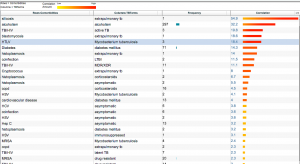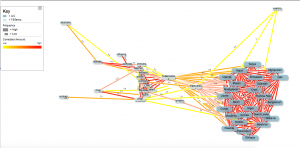CHAI’s Research and Development (R&D) Team works from a unique angle to support CHAI’s ambitions to improve patient outcomes in low- and middle-income countries. In particular, the team works to:
1. Identify, develop, validate, and transfer for manufacture and distribution better and less expensive drug formulations of existing HIV/AIDS, tuberculosis (TB), and malaria medicines;
2. Support the development of and provide guidance on optimized treatment regimens as well as transitioning to new regimens;
3. Optimize the work of healthcare providers and healthcare systems and explore new ways of generating evidence to inform policy; and
4. Implement a portfolio of new medicines, diagnostics, and technologies.
The R&D Team recently completed a proof of concept “Big Data” project to capture and leverage all of the world’s information related to TB diagnostics in resource-limited settings. One goal was to improve our understanding of the factors that impact health care and then rank and summarize them into target product and service profiles. By compiling both structured and unstructured data from a variety of sources and analyzing the relevant relationships found within this information, Directed Big Data Analytics (DBDA) is designed to read the Internet and help decision-makers connect valuable but disparate types of data in order to structure interventions that achieve maximum impact.
DBDA tools can both make and verify connections across scientific silos that might otherwise have gone unnoticed—possibly resulting in untapped potential for patients around the world. True to CHAI’s organizational value of entrepreneurship, the R&D Team is using DBDA to develop an automated market, capabilities, and technology mapping platform that can digest and process significantly more information than could otherwise be done using today’s traditional data-mining techniques. The current DBDA platform uses an eight-step process that helps the team develop the correct questions, construct dictionaries based on these questions, and create a specific and focused database that is relevant to these questions.
Paul L. Domanico. PhD, Senior Director of CHAI’s R&D Team, led a team that included staff from the Center for Innovation Management Studies (CIMS) at North Carolina State University’s Poole College of Management, experts from across CHAI, and international TB disease and diagnostics experts to develop capabilities based on DBDA to explore novel ways of diagnosing and treating infectious diseases. DBDA is being used to find faster, more cost-effective ways to diagnose TB, which has traditionally proved to be challenging in resource-limited settings, often resulting in persistent infection and even death. According to the World Health Organization, an estimated 9 million people developed TB and another 1.5 million died from the infection in 2013. In an effort to help bring down these infection and mortality rates, the team uses DBDA to compile all types of information related to TB, pulmonary disease, latent disease, and co-morbidities associated with infectious disease in order to assist program designers make informed decisions. In addition to advancing TB diagnostics work, the CHAI/CIMS partnership will also create capabilities within CHAI to address other infectious disease efforts in the future.
The CHAI/CIMS partnership has focused primarily on early trends in non-obvious pulmonary TB diagnostics; pediatric diagnostics and extra-pulmonary TB; TB diagnostics as complicated by people living with HIV; TB assessment using non-sputum and non-invasive methods; TB monitoring of active and latent infection; TB biomarkers; and detection of multi-drug resistant strains of TB. By employing DBDA to mine the international research community, we have sought to better understand the market size and potential for TB diagnostics in certain countries, the required investments associated with TB diagnostics and related diseases, and the entities currently developing a particular diagnostic product for TB that could prove to be potential partners.
During the first year of our efforts, DBDA has already produced actionable information. It identified microRNA (miRNA) as a promising area of research currently being funded for a range of diagnostics and of high potential interest to the global TB community. The preliminary search also identified the dimensions and outline of causation in the TB/HIV co-epidemic’s epicenter in South African mines along with the emergence of a revitalized cooperative effort among some 18 African countries to stem the rise in TB.
Figure 1:
Figure 1 shows a Facet Pair Analysis. The purpose of this method was to capture a holistic understanding of co-morbidities associated with TB within resource-limited settings and understand the systemic issues related to that pairing. Facet Pairs are based on annotating millions of web sites with all disease terms and then looking for any article in the public domain the refers to and correlates co-morbidities to TB in a clinically relevant manner. Once a particular and interesting pair is identified, the team would review the literature and other material that supported that correlation. This is a very powerful way to quickly find evidence for a particular clinical scenario.
Figure 2:
Figure 2 takes the output from the Facet Pair Analysis and takes the next step to understand how TB and co-morbidities distribute themselves across low-income countries. This analysis helps us explore the strength of geospatial evidence related to TB co-morbidities.







